THOMAS OF LANCASTER, REBEL COUSIN OF KING EDWARD II, FROMWARLORD TO SAINT/CHAPTER NINE
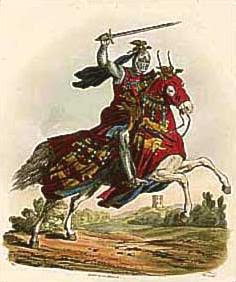
http://www.newworldencyclopedia.org/entry/Thomas_Plantagenet,_2nd_Earl_of_LancasterTHOMAS 2ND EARL OF LANCASTER
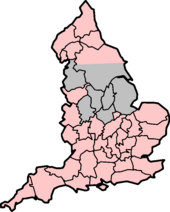
Thomas of Lancaster’s main possessions (Maddicott).THOMAS OF LANCASTER’S MAIN POSSESSIONShttps://en.wikipedia.org/wiki/Thomas,_2nd_Earl_of_Lancaster
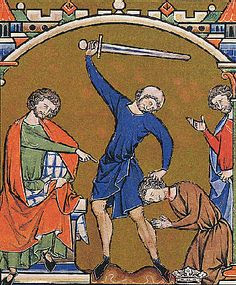
MURDER OF PIERS GAVESTON,INTIMATE FRIEND ANS[POSSIBLE] LOVER OF KING EDWARD II, UNDER THE DIRECT RESPONSIBILITYOF THE EARLS OF LANCASTER, WARWICK, HEREFORD AND ARUNDELMURDER OF PIERS GAVESTON,INTIMATE FRIEND ANS[POSSIBLE] LOVER OF KING EDWARD II, UNDER THE DIRECT RESPONSIBILITYOF THE EARLS OF LANCASTER, WARWICK, HEREFORD AND ARUNDELhttps://themortimersblog.wordpress.com/2017/03/22/a-royal-traitor-the-life-execution-of-thomas-of-lancaster-a-guest-post-by-stephen-spinks/

PONTEFRACT CASTLE, THOMAS OF LANCASTER’S FAVOURITECASTLE [INHERITED FROM HIS FATHER IN LAW, HENRY DE LACY, 3TH EARL OFLINCOLN, AT HIS DEATH IN 1311]IN HIS FAVOURITE CASTLE HIS SOCALLED ”TRIAL” TOOKPLACE AND NEAR HIS FAVOURITE CASTLE, IRONICALLY, HE WAS EXECUTEDhttps://en.wikipedia.org/wiki/Pontefract_Castle#Historyhttps://en.wikipedia.org/wiki/Pontefract_Castle
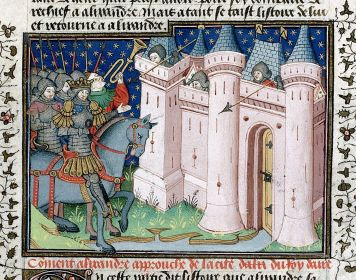
Edward was twice jeered by Lancaster’s garrison at Pontefract in 1317 & 1320 as he passed from north to south
EDWARD II WAS TWICE JEERED BY THOMAS OF LANCASTERAND HIS HOUSEHOLD, IN AT PONTEFRACT IN 1317 AND 1320, WHEN HEPASSED FROM NORTH TO SOUTH…..https://themortimersblog.wordpress.com/2017/03/22/a-royal-traitor-the-life-execution-of-thomas-of-lancaster-a-guest-post-by-stephen-spinks/
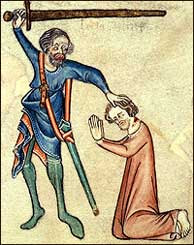
THE EXECUTION OF THOMAS, 2ND EARL OF LANCASTERhttp://www.luminarium.org/encyclopedia/thomasoflancaster.htm
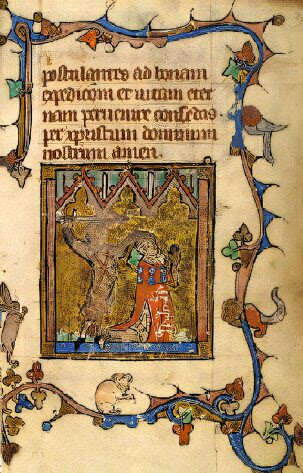
THE EXECUTION OF THOMAS, 2ND EARL OF LANCASTERhttp://www.englishmonarchs.co.uk/plantagenet_74.html

PLANTAGENETCOAT OF ARMS OF EDMUND CROUCHBACK [SON OFKING HENRY III, BROTHER OF KING EDWARD I ANDFATHER OF THOMAS, 2ND EARL OF LANCASTER], THOMAS,EARL OF LANCASTER AND HIS SUCCESSORShttp://www.newworldencyclopedia.org/entry/Thomas_Plantagenet,_2nd_Earl_of_LancasterVENERATION CULTUS OF THOMAS, EARL OF LANCASTER”SAINT THOMAS” [THOMAS THE MARTYR]PICTURE BELOW:
DEVOTIONAL PANEL OF THOMAS OF LANCASTER, PICTURINGHIS BEHEADING OUTSIDE OF PONTEFRACT CASTLEA DEVOTIONAL PANEL WAS A RELIGIOUS OBJECT, SOLDON PILGRIMAGE TO COMMEMORATE AND VENERATESAINTS AND MARTYRShttp://www.culture24.org.uk/history-and-heritage/archaeology/art522182-devotional-panel-of-beheaded-rebel-14th-century-martyr-surfaces-on-shore-of-river-thames

The beheading of the Earl is portrayed within the panel© MOLA / Andy Chopping
https://www.astridessed.nl/thomas-of-lancaster-rebel-cousin-of-king-edward-ii-from-warlord-to-saint-chapter-nine/
A TRAVEL IN HISTORY……
Readers!You have travelled with me to the first half of 14th century England, to watch,as digital eyewitnesses, the fight for Power between king Edward II andhis not so dear cousin Thomas, Earl of Lancaster, initially loyal to the king,then fell out with him for personal and political reasons, like king’s favouritismof a Gascon nobleman, Piers Gaveston, with whom he [the king] was very closeand who [Piers Gaveston] ended horribly, with an evil role of Thomas of Lancasterhimself [but the majority of British nobility played his nasty of less nasty part in it]And for political reasons it had to do with the eternal strugglefor power between kings nobles, between centralisation and decentralisation.
You have watched, as digital eyewitnesses in tension, like at a good movie,how the struggle intensified and ended sadly for the Earl of Lancaster, whowas executed on 22 march 1322, after lost the last open battle against theking, his cousin.
SEE THE FORMER CHAPTERS:
ONE
FOUR
FIVE
SIX
SEVEN
EIGHT
But that was not the end at all, neither politically, nor personally, as we’ll see.Because Thomas still had adherents, as political friends, who later wouldplay their role.Besides:Thomas had a brother, Henry, his later heir, who didn’t participate in hisbrother’s rebellion.But that didn’t mean, that he ever would not forget or forgivesome mighty persons, who had a hand in the execution of his brother…..But that will come later, as the major role he would play…….
We meet the later Earl Henry, Thomas of Lancaster’s brother, in this Chapter Nine……….
So it was not over yet:What puzzled me long was the fact, that Earl Thomas the warlord was declared a Saint [though not officially by the Holy Church]after his death.The puzzling question to me and I think many others, who are familiar with thelife and time of Earl Thomas was:How does a declared warlord, that certainly not led a holy life [you see fewSaints, who engage in battle, HAHAHA] became a Saint?
Read further and you’ll learn…..
CHAPTER NINE
SAINT THOMAS
”.O Thomas, strenuous champion of plentiful charity, who didst combat for the law of England’s liberty, intercede for our sins with the Father of Glory, that he may give us a place with the blessed in the heavenly court.”
Thomas, Earl of Lancaster, was no more.
But not forgotten, as this amazing story will tell:
Because within several weeks after his execution
, miracles were reported at the site of his execution and
on his tomb at Pontefract Priory, a dignified final resting
place for a man, who loved Pontefract Castle
the world… [504]
And there were great stories to be told:
MIRACLES:
Blind priest:
There was a story of a blind priest, who dreamed, that he should
go to the hill where Thomas of Lancaster was executed, and that he should have his sight again.
Because the priest had this dream for three consecutive nights,
he went to the execution hill in Pontefract, he prayed, that he might have his sight again and that great thing happened. [505]
One of the authors of the Brut chronicles [506] reported:
”And as he was in his prayers, he laid his hand upon the same place there the good man was martyred on; and a drop of dry blood and small sand cleaved on his hand, and therewith he rubbed his eyes, and anon, through the might of God and of St Thomas of Lancaster, he had his sight again, and thanked Almighty God and St Thomas.”
[translation of Kathryn Warner, historian and writer of among else ”Edward II, the unconventional King and
and host of the weblog ”EdwardthesecondBlogspot.com] [507]
Drowned child:
Another reported miracle was of a young child drowned in a well in the town of Pontefract, and was dead three days and three nights;
The child was laid upon the tomb of Thomas of Lancaster
and arose from death. [508]
The rich man from Condom [Gascony]
Another great story was from a rich man
from Condom [Gascony]:
About him the above mentioned author of the Brut chronicler wrote:
”
“Also there was a rich man in Condom in Gascony; and such a malady he had, that all his right side rotted, and fell away from him; and men might see his liver, and also his heart; and so he stank, that scarcely men might come near him. Wherefore his friends were for him full sorry. But at the last, as God wanted, they prayed to St Thomas of Lancaster, that he would pray to Almighty God for that prisoner, and promised to go to Pontefract for to do their pilgrimage. And the good man soon after slept full soft, and dreamed that the martyr St Thomas came unto him, and anointed all over his sick side. And therewith the good man awoke, and was all whole; and his flesh was restored again, that before was rotted and fell away; for which miracle the good man and his friends loved God and St Thomas evermore after. ” [509]
A touching story.
The rich man kept his promise and went to pilgrimage to
Pontefract and took with him four other men.
When back in his own country [France], they told about
the miracle of Saint Thomas [the executed Thomas of
Lancaster] [510]
Two men healed from ”morimal” [cancer or gangrene]
There was also a thrilling story of two men, healed
from ”morimal” [cancer or gangrene] [511]
GREAT STORIES/PILGRIMAGES
Bad news travels fast.
Good news too.
Given the amazing stories, it didn’t take
long, before they were spread under the common people, the clergy, the nobility, and even to Royal Court, as we shall see.
And you don’t have to be a Medieval man [or woman]
to understand, that with such stories,
hundreds, no, thousands of people came to visit
the tomb of ”Saint Thomas” [Thomas of Lancaster]
hoping to be cured of some disease or having a healthy childbirth,
etc, etc.
REACTION OF KING EDWARD II/THE DESPENSERS
Those miracles were reported to King Edward II during
the parliament that was held in York during april 1322. [512]
Since Thomas was executed on orders of the King, it
will come as no surprise, that neither he, nor his
favourites the Despensers, were very
happy with the news about the veneration of ”Saint Thomas”.
According to again the Brut chronicler, the Despensers
said that it was ”great heresy”. [513]
Of course they reacted like that:
Thomas of Lancaster had been their great adversary, wanting
them ousted from influence over the King.
The King himself was not pleased either, for the same reasons
[and not to forget, Thomas’ involvement in the execution of
his favourite Piers Gaveston in 1312].
In June 1323, Edward II ordered the bishop of London (Stephen Gravesend, a good friend and ally of the King] to prevent people praying and making offerings at a tablet in St Pauls “whereon are depicted statues, sculpture or images of diverse persons,” Thomas of Lancaster’s among them, “as the king learns with displeasure that many of the people go to the said tablet and worship it as a holy thing without the authority of the church of Rome, asserting that miracles are done there.” [514]
The Croniques de London describes this object instead as a tablet which Thomas of Lancaster had had made to celebrate Edward’s granting of the Ordinances in 1311. [515]
So Saint’s veneration was mixed here with Lancaster’s struggle
to curb royal power and obtaining more freedoms for the
barons [which subsequently later could benefit other classes
like the burgesses, etc] [516]
The story goes on:
In early september 1323, from Barnard Castle, King Edward II
ordered Richard Moseley, his clerk and the constable of Pontefract Castle, to “go in person to the place of execution of Thomas, late earl of Lancaster, and prohibit a multitude of malefactors and apostates from praying and making oblations there in memory of the said earl not to God but rather to idols, in contempt of the king and contrary to his former command.” [517]
Direct cause for the orders of the King:
In 1323, 2000 people, some of them from as far away as Kent, gathered to pray and make oblations at Thomas of Lancaster’s tomb. [518]
But the more the King pushed to prevent the veneration of
Saint Thomas, the more recalcitrant the people became:
Moseley and his servants, the men the King had ordered
to prohibit those, who went to pilgrimage, to pray
at the tomb of Saint Thomas were assaulted, and two of them, Richard de Godeleye and Robert de la Hawe, were killed. [519]
But not only the King wrote disapprovingly about the
veneration of ”Saint Thomas”
The archbishop of York, Edward II’s loyal friend and ally William Melton [who had sent the correspondence of Thomas
of Lancaster with the Scots to the King] [520]wrote
the Official of the Archdeacon of York, banning the cult
and empowering its activity there, pointing out
that Thomas of Lancaster was not a canonised saint, [521]
The veneration of ”Saint Thomas” grew in popularity
according as the tyranny of Edward II and his favourites
the Despensers [522], became worse and worse.
And not only Thomas of Lancaster was venerated as a
Saint:
Two Contrariants [you know: the rebels who fought
the Despenser influence over the King and forced their
banishment, under leadership of the Marcher Lords and
Thomas of Lancaster, in the Despenser War] [523] executed in March 1322 in Bristol were Henry de Montfort and Henry Wilington: in September 1323, miracles were also said to have taken place at their execution site. [524]
The mayor of Bristol told Edward II that Montfort’s brother Reginald bribed a ‘poor child’ of the city with two shillings “to pronounce to the people that he received healing of his sight.” [525]
On the contrary:
Men named William Cliff and William and John Corteis “went there many times and preached to the people that miracles were done and forcibly maintained this, saying that without doubt the things done there were true.” [526]
But a really impressive cult was the veneration of
Saint Thomas, that grew and grew during the last four
years of the reign [from 1322, the execution year of Thomas
of Lancaster until 1326-27, the invasion of Isabella of France and
former Marcher Lord Roger Mortimer and Edward II’s
subsequent downfall from power] of his cousin, King Edward II.
AFTER EDWARD II’S DOWNFALL/ATTEMPTS TO
CANONIZE ”SAINT” THOMAS OF LANCASTER
With Edward II’s downfall in 1327 and the rise in power
of Isabella of France [his estranged wife] and her [presumably]
lover, Marcher Lord Roger Mortimer and former
ally of Thomas of Lancaster [Mortimer surrendered to
Edward II at Shrewsbury, in january 1322, was imprisoned
in the Tower, escaped and fled to France, to return to England
with Isabella and an invasion army] [527], the
attitude towards the cult of ”Saint Thomas” changed.
Not only was it no longer officially banned, but royal and
ecclasiastical efforts were made to turn Thomas of Lancaster
from a popular to a canonized martyr. [528]
A campaign to canonise Thomas of Lancaster began in earnest, yet before Lancaster’s death sentence was
officially annulled by King Edward III in march 1328 [after
it had been discussed in the first parliament of the
new reign, february-march 1327] [529]
AND THEY SURE WENT FOR IT!
In a parliamentary petition to King Edward III
[who had succeeded his father Edward II after his forced
abdication or deposition, you can call it both] [530]
in the first year of his reign, the commons asked to
promote the canonization of Thomas of Lancaster. [531]
On the last day of february 1327 a letter was sent under
Edward III’s seal to Pope John XXII, requesting an inquiry into
the canonization of Lancaster.
Thomas of Lancaster was referred to as the Kings ”most
beloved kinsman” (nostrumque consanguinem carissimum”)
and described not only as a martyr by the manner of his death,
but also a pious man in life.
He was described as ”generous, provident and faithful” [532]
But this appeal for canonization was grounded not only
in his ”holy” life or ”martyr’s death” [as it was described and
which were conditions for a possible canonization], but also
on the miracles, performed after his execution. [533]
King Edward III wrote another two letters to the Pope to
promote Thomas of Lancaster’s canonization:
A second in march 1330 [534] and remarkably, a third AFTER his
deposing his mother Isabella of France and her [possible]
lover Roger Mortimer from power [535], meaning, that
he had not solely acted according to the wishes of Isabella and
Roger Mortimer [since he wrote the two first letters, when they
were the de facto rulers in England]
There was also this visit to the Pope:
After the downfall of Edward II [and before the third
letter of King Edward III to the Pope], Edward II’s own halfbrother,
so the uncle of Edward III,
the earl of Kent – who, by the way, was one of the men who condemned Thomas of Lancaster to death [536]
– visited Pope John XXII in 1329 to ask him to canonise Thomas. [537]
But the royal letters as the attempts of the Earl of Kent
were not the only ones:
Not surprisingly, Thomas of Lancaster’s
brother Henry of Lancaster [our ”mystery man, as
described in chapter seven, F], also wrote to the Pope,
a few days earlier than the first letter of King Edward III
on the last day of february 1327.
Archbishop William Melton of York [who in 1320 had sent
Thomas of Lancaster’s correspondence with the Scots to
King Edward II] [538] wrote the letter on behalf of
Henry of Lancaster, requesting the Pope to inquire
into the canonization of the popular ”Saint”. [539]
But Henry did more:
In collaboration with Isabella [springing
probably from Isabella and Mortimer’s desire to
keep Henry of Lancaster on board in the rank of of their supporters],
an agreement [confirmed by King Edward III] took place
between the Priory and the Convent of Pontefract.
It dealt with a chapel, which was to be built outside
the city walls, on the hill where Lancaster had been executed
five years ago [so this great event took place in 1327]
A hermit was to reside there to receive alms
for the building of the chapel.
He was to be assisted by a clerk appointed by Isabella
and Henry of Lancaster. [540]
And that was not all:
A clerk was appointed for collecting alms from all
over the Kingdom for the construction of the said chapel.
It proved succesful:
The offerings received were very generous! [541]
CULT UNDER KING EDWARD III
Under King Edward III, the cult of ”Saint Thomas”
continued to flourish and was greatly encouraged:
Hagiographies [542] about him were written [543]
and pilgrims continued to visit his tomb or place
of execution.
In time, new attributes were added to the list of Lancaster’s
superlatives, as Christ’s noble knight and athlete (nobili
Christi miles et athleta) [544]
A text written in Latin probably in the late 1320s laments Thomas as “the blessed martyr” and “flower of knights,” and says “the pouring out of prayers to Thomas restores the sick to health; the pious earl comes immediately to the aid of those who are feeble.” It begins “Rejoice, Thomas, the glory of chieftains, the light of Lancaster, who by thy death imitatest Thomas [Becket] [545]of Canterbury, whose head was broken on account of the peace of the Church, and thine is cut off for the cause of the peace in England; be to us an affectionate guardian in every difficulty.”
The text further emphasizes the notion that Thomas was condemned to death unfairly and was a freedom fighter for the people of England against royal despotism. [546]
That was not entirely untrue, since the trial
of Thomas of Lancaster was utterly unfair [547] [although
proofs of his letters with the Scots would eventually have
eventually led to death sentence or at least life
imprisonment of exile] and Thomas of Lancaster
DID combat the Edward II arbitrary favouritism on the
avaricious Despensers and tried to defend the Ordinances. [548]
On the other hand:
For a very important part he was guided by lust for
power and not idealism…….
The text also suggests, that Lancaster cared a lot about
the common people, writing
”Who when he perceived that the whole commons were falling into wreck, did not shrink from dying for the right, in the fatal commerce…he is delivered to dire death, on account of which England mourns. Alas! he is beheaded for the aid of the commons..” [549]
The reader may judge for his or herself, whether Thomas of
Lancaster really cared much about the common people….
Pilgrim’s badge were made for his veneration and
Thomas’ hat and belt preserved at Pontefract were used as remedies in childbirth and for headaches as late as the Reformation. [550]
NEVER CANONIZED
Lancaster was never officially canonized, although the
chronicler Thomas Walsingham wrote in 1390, that
Thomas WAS. [Sanctus Thomas de Lancastria canonizatus est]
[551], which led to a big revival of his cult.
But although Thomas never received the official papal
status of martyr, he remained a martyr by popular acclamation
for the next two hundred years…..[552]
TRANSFORMATION FROM A WARLORD REBEL INTO
A SAINT
Now what intrigues me most in this amazing story
-I wrote that on the start of this book [HAHAHA, my article],
is the transformation of Thomas of Lancaster from
a warlord into a saint.
How was it possible that a man of high birth and rank
from double royal descent [both from his father’s as his
mother’s side] [553], who was a rebel warlord for nearly ten
years, taking up arms against his King, feuded with other
nobles [554], made the King’s favourite [Piers Gaveston]
executed [joined by other nobles] [555] and was [as far as I know] seeking wordly power and wealth only, in death was transformed
into a Saint?
A miracle in itself.
According to Medieval standards, to become a saint, certain clear qualifications were
necessary, like having led a pious life,
having defended the rights of the Church and [recommendable]
died for it, like Thomas Becket did, who indeed was
canonized [556]….
Now Thomas of Lancaster certainly did NOT
led a pious life, nor did he defend the rights of the Church.
On the contrary, he sought [to put it in familiar Medieval
terms] temporal power and wealth.
Besides:
Thomas was not the best man of his time [I refer
to the murder of Piers Gaveston, Thomas’ arrogance,
taking up arms against his King], although there were
far worse men [I refer to the crimes of the Marcher Lords,
which Thomas did NOT commit, although supporting
the Lords] [557]
Also he was NOT known for a particular generosity to
the poor, in contrary to later hagiography.
[558]
On the other hand, following Medieval standards, at least he
had one qualification to Sanctity:
Miracles were reported on his tomb and place
of his execution. [559]
And because of those miracles, Thomas was considered
to be a Saint.
MIRACLES
BELIEF/POPULARITY/REACTION OF THE PEOPLE
Now in the Middle Ages, when every person from
the King down to the lowliest peasant, lived lives,
that were ordered around the beliefs, ceremonies
and doctrines of the Catholic Church, the fenomenon ”miracle” was as real as computers and
televisions in modern eyes.
Regarding to the supposed miracles at the grave and
the tomb of Thomas of Lancaster:
Now of course it is impossible
to know what actually took place at his grave or tomb,
but whatever happened, people believed in those
miracles, which caused pilgrimages to his grave.
Because:
Whoever does NOT want to be healed
from a disease, freed from his [or her]
headaches or having a healthy childbirth? [560]
That can partly explain the agressive reaction on
the King’s clerk, Richard Moseley and his servants,
when they tried, on the orders of the King [Edward II],
to prevent the people to venerate ”Saint Thomas” [561]
People [often poor people], who wanted to be healed,
came ”as far as Kent” [562] [Kent lies in the
South of England, Pontefract
Castle lies in the middle of England, direction North] [563]
in the hope to be healed, only to discover, that the autorities
tried to prevent them reaching their goals:
Veneration of Saint Thomas and healing of their
illnesses!
Of course they were furious [not to justify
the violencer that took the lives of the
two servants of Richard Morseley, of course]
MIRACLES/WHO GAINES AND WHO LOSES?
At every event in history or our times, whether
wordly of ”holy” events, it is important to have a close look
[with regard to the ”holy” events, with all respect],
who benefits from it, or who loses.
That ”benefit” or ”lose” can be political or materialistic [money, possession, fame]
Or ”non materialistic”;
emotional and [or] spiritual [or a mix between materialistic
and non materialistic]
Now take a look on those, who were the ”losers”
THOSE, WHO LOSE
”Losers” not in the present meaning of the word [564],
because here was a King and high nobility involved,
King Edward II and his favourites the Despensers.
Being Thomas’ executioners [together with a number
of ”colleague” nobles of the Despensers] [565] and
knowing that he had still support
[especially in the North of England], the news, that alleged
miracles had taken place on his tomb [or place of execution],
was, to put it mildly, disturbing to them.
And let’s not forget:
Thomas WAS a condemned traitor [566], in an unfair trial,
admittedly, but a ”legal” one, confirmed by the King,
who also had set in judgment over him.
And a traitor as a Saint….?
From their point of view, that must have been bizarre.
I can understand the King and the
Despensers [who were so closely connected with the
King that I think it is justified to mention them
simultaneously] very well:
They had a huge problem.
Their government was growing in unpopularity [567]
They didn’t know what really took place at
the tomb [or place of execution] of Thomas,
whether there was someone influential behind those ”miracle”
rumours.
Someone [with support from the North], who was
able to rise against the King again?
Yes, I can understand their worries.
So the King took measures to end the veneration
of ”Saint Thomas” [see above : Reaction of King Edward II
Despensers], to no avail.
Because whatever he did to suppress the venerations, they only
grew in popularity……..
THOSE WHO GAIN
Now take a look on those, who ”gained” or ”profited”.
The first I mention is Thomas’ brother Henry.
Now it is known, that he took no part in his
brother”s rebellion [568] and spent most of
the ”hot years” [between 1319-1322, during which the
feud between King Edward II and Thomas of
Lancaster escalated, ending in his execution, see the
chapters 5 t/m 8] in France. [569]
There is even suggested, that Thomas and Henry were not that
close. [570]
Be that as it may: [571]
But of course the execution of his brother
Thomas must have been dramatic for Henry, as
his actions will show [see chapter 10, Aftermath]
We don’t know, how the stories about the
miracles were spread:
Perhaps Henry had a hand in it [I don’t know,
only pointing out the possibility]
Perhaps not.
But for sure he came at the heart of the action:
A few days earlier before the first letter
of King Edward III in 1327 [King after the deposition
of his father Edward II in 1327] [572], Archbishop William Melton of York [who in 1320 had sent
Thomas of Lancaster’s correspondence with the Scots to
King Edward II] [573] wrote a letter on behalf of
Henry of Lancaster, requesting the Pope to inquire
into the canonization of the popular ”Saint” [574]
Under responsibility of Henry of Lancaster and Queen Isabella of France, also an agreement [confirmed by King Edward III] took place
between the Priory and the Convent of Pontefract.
It dealt with a chapel, which was to be built outside
the city walls, on the hill where Lancaster had been executed
five years ago
A hermit was to reside there to receive alms
for the building of the chapel.
He was to be assisted by a clerk appointed by Isabella
and Henry of Lancaster. [575]
Henry’s aim may have served several purposes:
An emotional one:
Publicly commemorating his brother and
restoring family honour [after all, Thomas was
executed as a traitor]
But also a materialistic one:
Veneration of Saints [and all the trade
in pilgrimages etc] was very profitable.
Queen Isabella and Roger Mortimer:
The second to be mentioned were Queen
Isabella and her ally and possible
lover, former Marcher Lord Roger Mortimer
[see also the chapters six and seven about his
role in the Despenser war]
Their motives were mainly political:
First to counterbalance the potential
posthumous popularity of Edward II
[his tragic death aroused pity and the
Isabella and Mortimer regime grew more and
more unpopular, see chapter 10, Aftermath]
Their second motive was, possibly, to keep
Henry of Lancaster on board as their supporter,
especially since he headed the new minor’s kings
council. [576]
King Edward III
And King Edward III himself, who wrote three times
to the Pope in order to get a canonization for ”Saint Thomas”
I bring the reader into memory, that the initial two letters
were written by Edward III, when his mother Isabella
and her [possible] lover Roger Mortimer were the de facto
rulers [577], so it was on that moment not clear, whether the King
[then 14 years old] acted of his own accord.
However, after having overthrown the regime of his
mother and Isabella and Roger Mortimer [578],
Edward III did wrote a third [and last] letter to the Pope [579].
That WAS on his own accord, since now he was
not king in name anymore, but the de facto ruler too.
Edward III’s motive could have been his appreciation
for Henry of Lancaster, who not only served
in his council [under the Isabella and Mortimer regime],
but also helped the King to put an end to
the Mortimer [and Isabella] regime. [580]
Also Edward III’s great liking of Henry’s son, Henry
of Grosmont [first Duke of Lancaster, the second duke in
English history, after Edward III’s eldest son, the Black
Prince] [581], who represented his father in parliament
from 1330 [because of Henry of Lancaster’s loss of
eyesight], could have played an important part in
Edward III’s attempts to canonize Thomas of
Lancaster [582]
Anyway, that were my considerations about the motives
of the important players after the downfall of Edward II,
regarding the canonization of Thomas of Lancaster.
WARLORD/FREEDOMFIGHTER/SAINT
Thomas did not lead a pious life, nor seemed
to have cared much about the ”common people”
or ”the poor”
The only link with commons I can see is his
devotion to the Ordinances [583], curbing the royal power
and giving space to more power for the nobility,
which eventually could have led to more power
for the commoners too.
So he derived his Sanctity not from a pious
life or for fighting the rights of the Church,
but from the miracles
that were reported on hisgrave and place
of execution, since people were appartently healed.
I ask myself:
Reported by who?
The people who were ”healed” and their
families?
Or had Henry, Thomas’ brother, a hand in those rumours,
desiring to repair the honour of his executed brother
and the family name.
Possible.
But at the end, there was more to it:
Not only people venerated ”Saint Thomas”
because of the miracles, this veneration was
also an
act of protest against the mounting tyranny of the King and
the Despensers, who repressed the Contrariant’s resistance
severely [executions, imprisonments, hard treatment of
the wives of the rebels] [584]
When faced with such a tyranny, those who opposed the
”tyrants” [The Contrariants, namely Thomas, the Marcher
Lords and allies], soon became ”freedomfighters” and in the light
of unfair trials, underdogs and in the case of
Thomas of Lancaster, eventually, holy…..
Also by law Thomas had his honour preserved [ in
1328 his trial was reversed] [585] and his brother
Henry his satisfaction.
I end with the beginning of this chapter:
A part of a prayer to ”Saint Thomas” “the blessed martyr” and “flower of knights,”
”.O Thomas, strenuous champion of plentiful charity, who didst combat for the law of England’s liberty, intercede for our sins with the Father of Glory, that he may give us a place with the blessed in the heavenly court.” [586]
The warlord had become ”Thomas the Martyr” [587]
ASTRID ESSED
NOTES 1-250
NOTES 251-347
NOTES 348-400
NOTES 401-451
NOTES 452-503
NOTES 504-587
